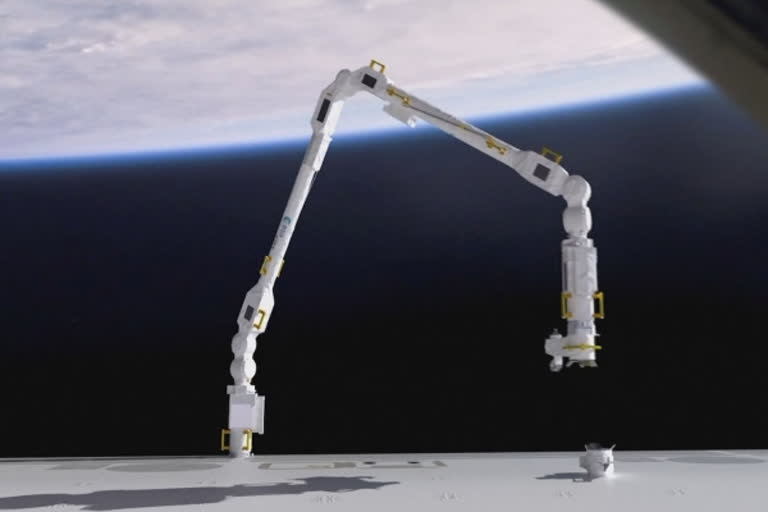Kazakhstan: Within six months of its arrival at the Russian part of the International Space Station, this new robotic arm will be ready to perform its first tasks. Its seven rotational joints provide a larger range of motion than, for instance, a human arm. "Typically, what this robot does and what maybe any robot does is it's a pick and place operation. So, you pick up something that you have to move by the robot, and you pick it up somewhere and then you move it around and you place it somewhere else," ESA's ERA project manager, Philippe Schoonejans.
Astronauts and cosmonauts will use the robotic arm to save time and effort in space station maintenance. It will act as a tool to transfer small payloads directly from inside to outside the ISS without the need for spacewalks. The robot resembles a human arm with an elbow, shoulders, and wrists. At 11-metres long, the ERA can lift up to eight tons and can be operated with an astonishing accuracy of 5 millimetres.
One of the most impressive features of the robotic arm is that it can move hand-over-hand over the Russian module. One of its first jobs will be to fit radiators to the outside of the new Multipurpose Laboratory Module. "In your house, you use it to warm up the house, but in space, you put the radiator on the outside and the module uses it to get rid of its heat," explains Schoonejans. "So, as soon as this radiator is installed, then all the equipment in the scientific module can be switched on because then it will be able to get rid of its heat."
READ: NASA’s Self-Driving Perseverance Mars Rover ‘Takes the Wheel’
Dutch astronaut André Kuipers knows how tricky spacewalks outside the ISS can be. "The spacewalks that some of the astronauts do are difficult, taking a lot of time, energy, oxygen, there's some danger involved," he says. "So, we want to avoid these kinds of extracurricular activities if they're not needed if they can be done by a robotic arm."
There are already robotic arms on the ISS, but not on the station's Russian side, Kuipers explains: "Now, on the front side of the space station, we have a Canadian and a Japanese robotic arm, but on the Russian side, we didn't have that. We had some mechanical arms to make it a bit easier for the cosmonauts during the spacewalk, but this will help a lot. It can function as a third crew member," he says. The ERA also has several modes of automation. This means each mission can be prepared on the ground and then uploaded to the arm's computer after which astronauts onboard can run and authorise each step of the mission.
READ: These virtual robot arms get smarter by training each other
According to ESA, the ERA could theoretically even work autonomously and run the mission all by itself. It also offers the possibility for astronauts on board to piece together a new mission on the fly, if necessary. The arm will have several important applications to alleviate the work of the astronauts onboard the International Space Station. Schoonejans says what might seem out of place is the bulky control panel, but this is for a good reason.
"One other thing which is peculiar about this control panel that it has is a display, which are all compatible with the use of such a panel in outer space, you cannot just use a laptop and float around with it in space. It cannot deal with the vacuum of space, it cannot deal with the radiation of space, it cannot deal with the extreme temperature differences that can take place in space. So, we have to make this relatively low-tech control panel, which can withstand all of these very specific conditions that you have if you move work from the outside," he says.ESA says crew time is precious and the safety of astronauts is paramount, the arm can be used for tasks described as the three D's - Dull, Dangerous and Difficult.
READ: Remembering Gottfried Wilhelm Leibniz on his birth anniversary



